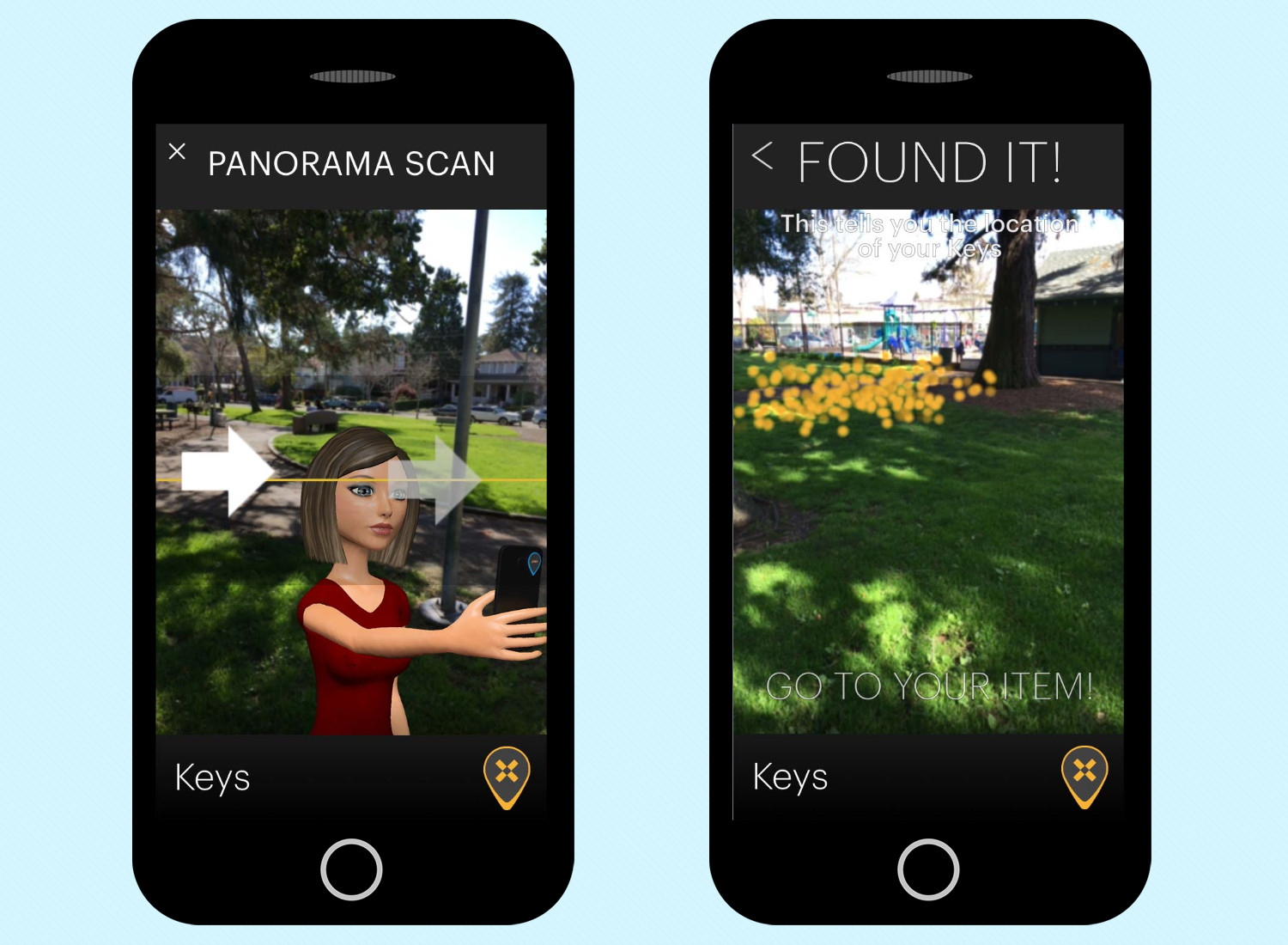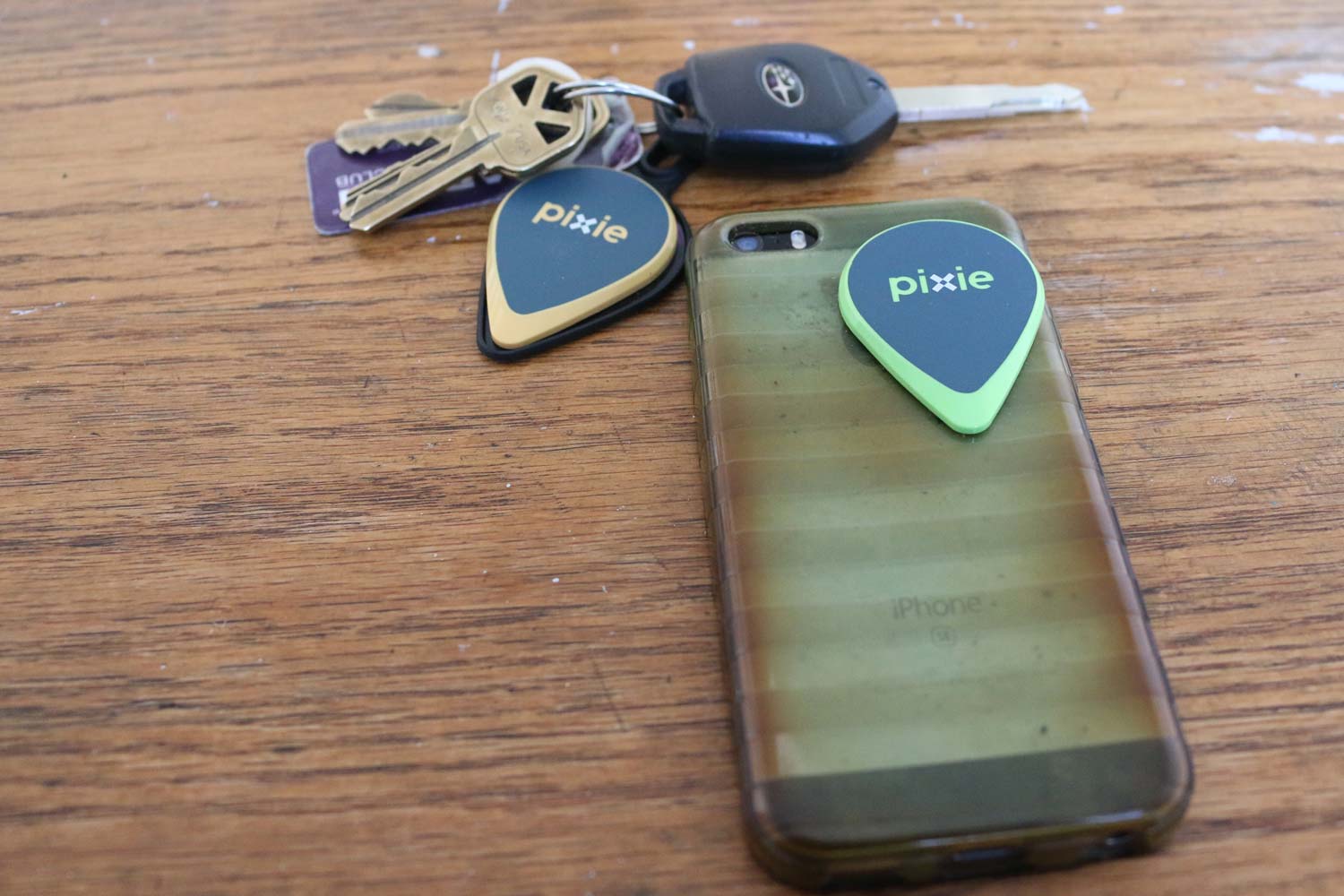Tom's Guide Verdict
Pixie Point puts augmented reality to good use in helping you find lost items, but the physical setup adds too much bulk to your phone.
Pros
- +
Clever use of augmented reality
- +
Helpful on-screen instructions
- +
Accurate alerts within 5 feet
Cons
- -
Pixie Point must be attached to your phone
- -
Battery can't be replaced
- -
Limited range
- -
iOS only for now
- -
No alarm
Why you can trust Tom's Guide
Give Pixie Point credit for taking a different tack for helping you find lost items. Unlike other key finders that rely on audio alerts, Pixie Point taps into augmented reality to guide your eyes to misplaced keys, wallets and other valuables.
While it's a little bit more involved than tapping an app button and listening for an audio alert, Pixie Point's approach works — to a degree. But it adds bulk to your sleek, streamlined phone.
How Pixie Point Works
For the system to perform its AR magic, you'll need to attach one Pixie Point to whatever object you want to track — a set of keys, say — and another Pixie Point to your phone. That means you'll need to buy at least two Pixie Points. Manufacturer Pixie Technology sells them in a $50 two-pack or a $100 four pack. That two-pack costs twice as much as what you'd pay for a standard key finder like the Tile Mate.
Pixie Technology used to include a case that fit the iPhone 6 through the iPhone 8 with a nook on the back for holding the Pixie Point that you must attach to your phone. But you don't necessarily need a case; I was able to stick a Pixie Point on the back of my iPhone SE, and the Pixie device stayed attached even after multiple trips in and out of my pocket. (Pixie Point works only with iOS for now, though the company says an Android version is in the works.)
The problem here is that even with a specially designed case, the Pixie Point is not discrete. The teardrop-shaped tracker is 1.9 x 1.4 x 0.1 inches, and it adds a quite noticeable bulge to the back of your phone. I winced every time I reached for my iPhone and, instead of gripping a smooth phone case, felt the Pixie Point sticking out. It's possible other users may not mind, but the Pixie Point really degrades your phone's aesthetics.
How Pixie Point Performs
Pixie Point is really designed to find misplaced items, not alert you when they're about to go out of range. Once you've paired the Pixie Point on your phone to the one attached to your valuables, finding that item is as simple as launching the app and following the on-screen instructions. You'll do a scan of the area, holding your phone up like you're taking a panoramic shot and turning in a circle. Once the Pixie Point locks in on your lost item, the system overlays viritual dots — the company calls this "Pixie dust" — on the area where you need to go look.

At this point, the screen of your phone changes to a compass-like view, displaying the direction of the item and a rough estimate of the distance. Get within 5 feet, and the app converts to a metal detector view, using visual and audio cues to let you know that you're getting warmer. This is a clever, if somewhat involved, approach, though I found myself wishing that the Pixie Point I'd attached to my lost keys would offer a helpful beep to simplify searching even further.
If this sounds fairly involved, that's because it is, especially in a world where you can fire up the companion app for a Tile, TrackR or Chipolo key finder, press a button and hear an audio alert that pinpoints your missign keys in the time it takes you to do a panoramic scan for your Pixie Point.
Pixie Point works best when you're trying to find an object within a contained area. When I tried to find an item that was 50 feet or more away, the Pixie app encouraged me to move to where I could get a better signal, though it didn't prompt me to head in any particular direction. (Dig into the included how-to videos on the Pixie app, and you'll be advised to walk in an L-shaped pattern until your Pixie Point comes into range.) All this makes the Pixie better suited for finding things in your house or office than in open areas like a public park.

Even indoor searches can be problematic if you've got multiple floors or rooms to deal with. I tried searching for my keys from my basement office when they were located on the floor above me. The Pixie Point guided me to the right spot in the house, but couldn't tell me that I needed to go up a floor to find my keys. Other times, the on-screen guide would suggest I walk into closets or through windows to get my lost item. AR-assisted searches are helpful enough, but the technology has its limits.
The Pixie Point's battery has its limits, too. You can't replace it, and it will run out after about a year. At that point, you'd need to buy a new set of Pixie Points, a company rep told me. It's unclear if the company will offer a discount to existing customers like the one that both Tile and Chipolo offer.
With iOS 11 now offering greater support for augmented reality apps, Pixie is taking advantage with an updated version of its iOS software. Promised features in the updated app include better AR effects, including the "Pixie dust" and "X marks the spot" features that help you find your lost objects. Virtual representations of your lost items now appear in the app as well. We're in the midst of giving this update a good going-over now.
Bottom Line
Under the right conditions, Pixie Point's use of AR can provide a handy way to find things. But keeping a tracker tacked on to your phone is a big ask, especially when other key finders like the Tile Mate and TrackR Bravo can get the job done without adding any bulk to your mobile device.
Philip Michaels is a Managing Editor at Tom's Guide. He's been covering personal technology since 1999 and was in the building when Steve Jobs showed off the iPhone for the first time. He's been evaluating smartphones since that first iPhone debuted in 2007, and he's been following phone carriers and smartphone plans since 2015. He has strong opinions about Apple, the Oakland Athletics, old movies and proper butchery techniques. Follow him at @PhilipMichaels.


